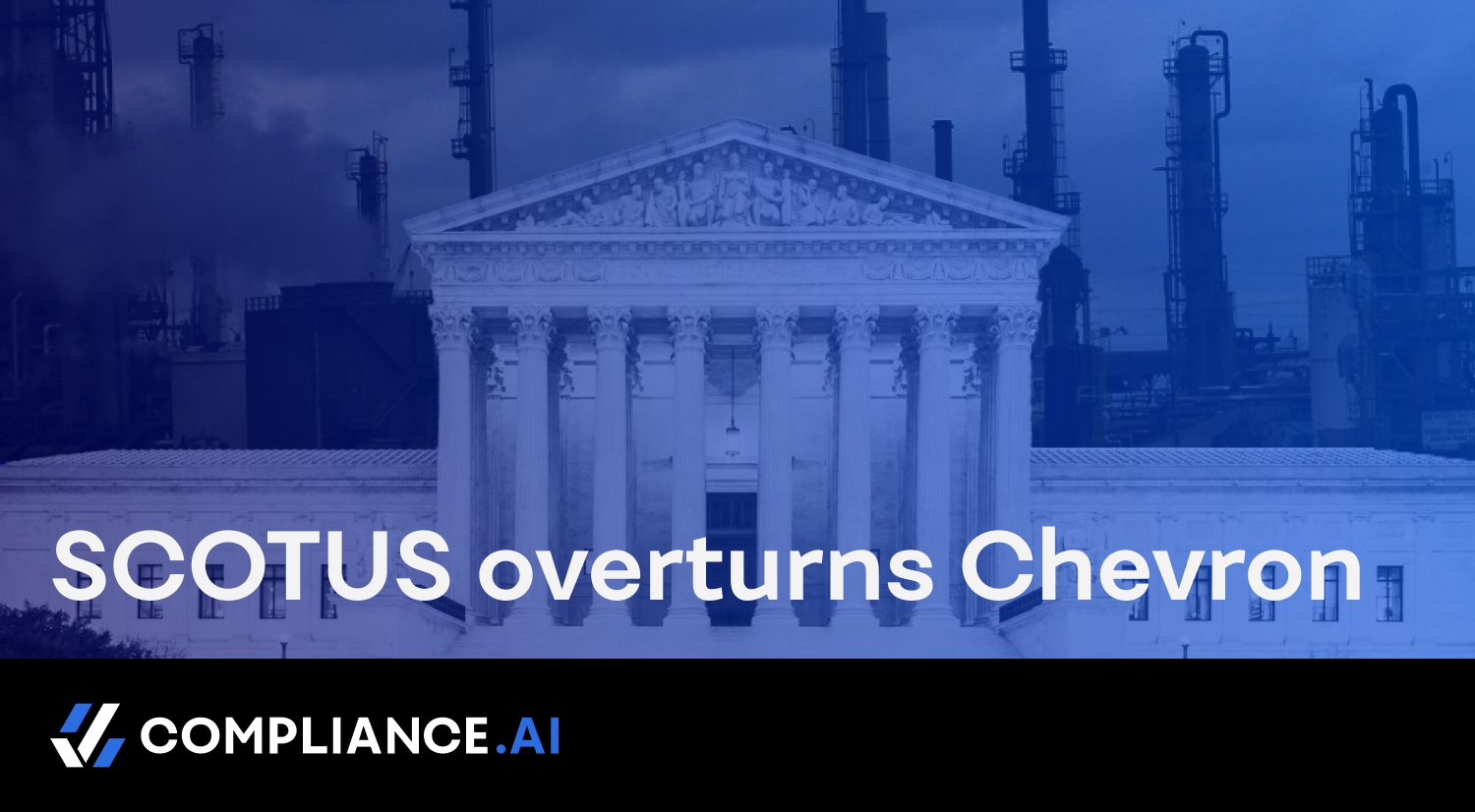On June 28, the Supreme Court of the United States (SCOTUS) overturned an enduring precedent, known as the “Chevron doctrine,” under which courts deferred to federal regulatory agencies when interpreting complicated and/or ambiguous regulations. In a 6-3 decision, the consolidated cases of Loper Bright Enterprises v. Raimondo and Relentless, Inc. v. Department of Commerce overturned the Chevron doctrine.
Decided in 1984, the original Chevron ruling favored experts at regulatory agencies over challengers when the letter of the law is ambiguous. In an opinion written by John Paul Stevens for the 6-0 majority, SCOTUS had determined that “federal judges—who have no constituency—have a duty to respect legitimate policy choices made by those who do. The responsibilities for assessing the wisdom of such policy choices and resolving the struggle between competing views of the public interest are not judicial ones: ‘Our Constitution vests such responsibilities in the political branches.’”
At the end of its most recent term, in a 6-3 decision, SCOTUS overturned the Chevron doctrine. Writing for the majority, Chief Justice John Roberts in Loper Bright tossed out deference to agency expertise and experience, stating that the Administrative Procedure Act (APA) vests judges, not agencies, with the power to interpret laws and statutes.
“The deference that Chevron requires of courts reviewing agency action cannot be squared with the APA,” Roberts wrote. “Perhaps most fundamentally, Chevron’s presumption is misguided because agencies have no special competence in resolving statutory ambiguities. Courts do.”
After Chevron, how should compliance teams adjust?
This decision represents a regulatory sea change across federal and state governments, as well for regulated industries. Courts have deferred to the Chevron doctrine in cases involving everything from workplace safety to banking regulations to security laws. In fact, legal experts believe Chevron to be the most cited SCOTUS administrative law decision in history, applied in numerous federal and state agency decisions across the country.
By throwing out Chevron deference, SCOTUS has almost certainly opened the door to numerous lawsuits. Expect litigation challenging the enforcement actions of such agencies as the SEC, FDIC, FTC, CFPB, and state agencies.
For compliance teams, the very difficult job of keeping up with regulatory changes and enforcement patterns was hard enough before Loper Bright. Now, with an enforcement landscape that will almost certainly fragment and become more complicated, compliance teams are left to ask, “What’s next?”
How to use automated change management to cut through the confusion
We don’t have a crystal ball and can’t predict the future, but you don’t need to be a fortune teller to understand that the only way to keep up with the rapid pace of change that is happening on a massive scale is through automation. By automating the regulatory change management process, businesses can free their compliance teams from the time-consuming burden of keeping up with agency and court activities, handing those tasks off to regulatory change management software.
Using powerful tools like AI, machine learning, and predictive analytics to automate and streamline the compliance process not only brings clarity amidst chaos, but it also helps eliminate errors, reduce risks, and free up time for overburdened compliance teams, so they can turn their attention to strategic aspects of their roles.
Modern regulatory change management platforms systematically monitor, analyze, and implement regulatory changes from various jurisdictions and regulatory bodies. By integrating sophisticated algorithms, AI, and machine learning, automated regulatory change management systems quickly identify relevant regulatory updates, assess their impact on the organization, and guide the necessary adjustments to policies and procedures. By automating compliance processes, businesses can prioritize their compliance activities more effectively, focusing resources on areas of highest impact or risk.
Moreover, modern compliance change management tools also automatically document regulatory changes within organizations, so compliance managers can vet all changes and ensure that compliance decisions are traceable, a capability that is vital for demonstrating compliance to regulatory bodies and minimizing the risks of non-compliance penalties and reputational damage.
Compliance.ai has developed a regulatory change management platform that is designed to mitigate risk, reduce costs, and increase confidence in compliance status for the entire enterprise. Compliance.ai empowers businesses by automatically monitoring regulatory updates, identifying obligations, and ensuring required changes are completed. To learn more and see how automation can effectively streamline your processes, try out our Compliance Pro edition.


